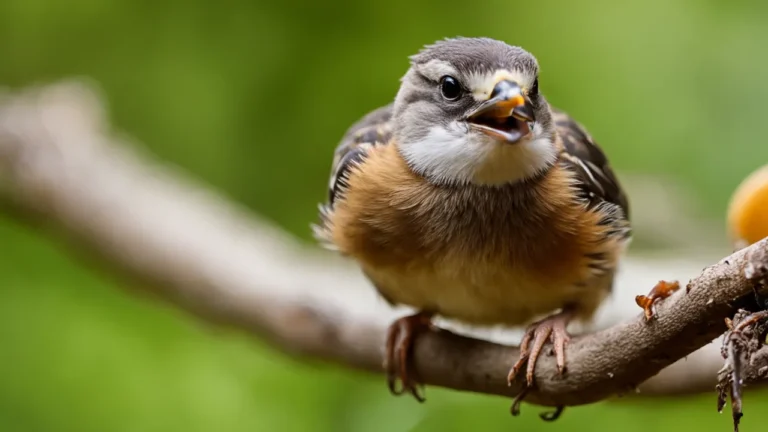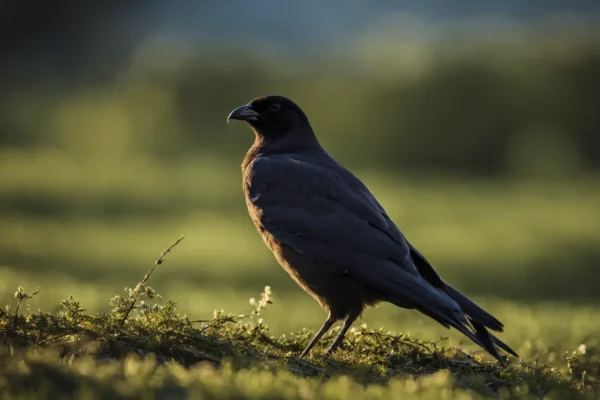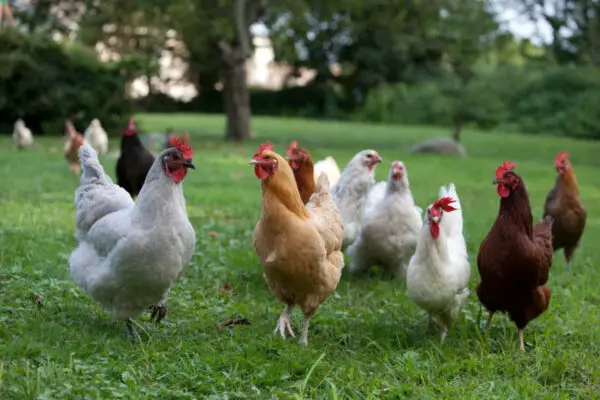It might be alarming to find a young bird that has fallen out of its nest. Our natural desire as compassionate beings is to see the young animal through to survival, either by taking it to a wildlife rehabilitation facility or letting it fend for itself.
Among the most frequent queries is: Is it okay to offer water to a newborn bird? Giving young birds water does need some care, but it is possible to do it safely if you use the right approach.
For those with limited time, the following is a brief response to your inquiry: A young bird should only be given water droplets by being gently allowed to sip from the tip of your finger or a tiny paintbrush. Take great care to prevent the newborn bird from becoming wet or having its head submerged in water.
Find Out Whether the Baby Bird Actually Needs Water
Ascertaining if a young bird really needs water comes before providing it. Here are some things to think about:
Observe any symptoms of dehydration.
A newborn bird’s requirement for water may be ascertained by looking for symptoms of dehydration. Lethargy, panting, sunken eyes, and a dry or sticky beak are a few examples of these. It’s probable that the bird is dehydrated and in need of water if you see any of these symptoms.
Think about the natural history and species.
When deciding whether or not a young bird needs water, its species and natural history should also be taken into account. Certain bird species may not need extra water since they get the majority of their water from their food.
For instance, the insects that insectivorous birds eat may provide them with enough moisture. Birds who eat mostly seeds, on the other hand, could need more water.
Determine the bird’s amount of energy.
The juvenile bird’s energy level might also serve as a gauge for its water demands. The bird may be showing symptoms of dehydration if it seems lethargic, feeble, or has trouble standing. In these situations, giving the bird water may aid in rehydrating it and giving it more vigor.
It is crucial to remember that you should always seek the advice of a veterinarian with experience in bird care or a wildlife rehabilitator if you are unclear whether a young bird needs water. They will be qualified to provide counsel and direction depending on the particular requirements of the bird.
Select the Appropriate Equipment
To protect a young bird’s safety and wellbeing while providing it water, the appropriate instruments must be used. The following are some alternatives to think about:
A spotless paintbrush or finger
Using a clean finger or a soft paintbrush is an easy and efficient technique to deliver water to a newborn bird. Touch the bird’s beak with the paintbrush or your finger after gently dipping it into a tiny bowl of water. Naturally, the newborn bird will open its beak to drink the water.
This technique imitates how a parent bird might feed its offspring in the wild.
A dropper for lower quantities
Using an eyedropper might be an excellent way to feed the fledgling bird smaller quantities of water if necessary. Prior to use, make sure the eyedropper has been properly cleaned and sterilized. Squeeze the eyedropper gently in the vicinity of the bird’s beak after adding a little quantity of water to it.
Avoid forcing the water into the bird’s mouth as this might result in choking.
It is crucial to remember that a newborn bird should only be given water with the greatest care and compassion while using any instruments. Because they are fragile animals, baby birds may be harmed by harsh handling or force feeding.
Keep an eye on the bird’s behavior and stop if it exhibits any symptoms of pain or distress.
You may get helpful advice and insights on this subject on reliable websites like Audubon or Wildlife Rehabber, which can be visited for more in-depth information on how to feed water to a newborn bird.
Give Just a Tiny Amount at a Time
It is crucial to give a newborn bird just a few droplets of water at a time. This is due to the fact that young birds’ tiny stomachs make them susceptible to overloading if they are fed too much water at once. You may make sure the bird can drink the water comfortably and prevent aspiration or choking by giving it in modest quantities.
Bring the water up to the beak’s tip.
It is recommended to use a little dropper or syringe to gently touch the water to the tip of the beak when providing water to a newborn bird. To discharge a few drops of water, gently squeeze the dropper, being careful not to move too quickly or forcefully.
By doing this, the bird is encouraged to drink by being able to taste the water.
Allow the baby to gulp in between drips.
It’s crucial to wait for the bird to swallow before adding additional droplets of water after contacting it with its beak. This allows the bird time to assimilate the water it has previously ingested and swallow it. Additionally, it helps shield the bird from drowning or unintentionally breathing in water, both of which might be harmful to its respiratory system.
Do not submerge the bird.
A newborn bird should be given water, but it’s also crucial to keep it from becoming wet or coerced into drinking. This may result in breathing problems, stress, and pain. Rather, concentrate on providing the bird with little quantities of water on a regular basis, letting it drink at its own speed.
You may check reliable websites like Audubon or The Spruce Pets for more detailed information on raising young birds. These websites provide helpful information and recommendations on how to properly care for young birds in a variety of circumstances.
When to Contact a Wildlife Rehabilitationist
Although it may be alluring to attempt to assist a young bird on your own, it’s crucial to recognize when to contact a wildlife rehabilitator. These experts are qualified and experienced to provide wounded or abandoned birds the best treatment possible.
If the bird seems sick or hurt
It is imperative that you get in touch with a wildlife rehabilitator right away if you see that the young bird seems sick or damaged. They are qualified to determine the bird’s health and provide the necessary medical care.
It may even be against the law in certain places to attempt to touch or treat an injured bird oneself since this might do the bird further injury.
If you’re unable to recognize the species
It’s usually advisable to get help from a wildlife rehabilitator if you’re not sure what species the young bird is. Birds of various species need varied diets and levels of care. A rehabilitator is able to correctly identify the bird and offer it the care and food that are particular to its species.
If the parents take more than an hour to return
Sometimes a young bird that has fallen from its nest or been abandoned by its parents will be in your path. Watch the scenario for at least an hour to see whether the parents return before taking any action.
It’s time to call a wildlife rehabilitator if the parents don’t return for more than an hour. They are able to assess the best course of action for the young bird’s wellbeing and provide the required treatment.
Recall that wildlife rehabilitators are qualified experts who know how to manage these kinds of circumstances. Their expertise and resources enable them to provide the greatest possible chance of survival for newborn birds. Seeking them help is always preferable than trying to take care of a newborn bird by yourself.
Visit www.wildliferehabinfo.org to learn more about wildlife rehabilitators and where to locate one in your region.
Recognize the Risks Associated with Improper Watering
It’s important to be aware of the possible risks associated with incorrect watering while providing water to an infant bird. Water is necessary for their existence, but if it is not provided properly, it may also be dangerous.
You can protect the health of the young bird you are taking care of by being aware of these risks.
Pneumonia via aspiration
Aspiration pneumonia is one of the primary hazards associated with poor irrigation. This happens when the bird swallows the water by mistake and instead inhales it into its lungs. Aspiration pneumonia may cause fatalities as well as serious respiratory issues.
It’s critical to provide water in a manner that reduces the likelihood of this illness.
Low body temperature
Hypothermia is another risk to be aware of. Because they are so sensitive to temperature fluctuations, baby birds may experience a sharp decrease in body temperature if they come into touch with cold water. Their health and survival may suffer significantly as a result of this.
It is also essential that you make sure the water you provide the bird is at the right temperature.
Submerging
Even though it may seem apparent, if newborn birds are provided water in a manner that enables them to immerse their bodies or beaks, they really run the danger of drowning. They are particularly prone to drowning because to their tiny stature and inability to swim.
It is crucial to provide water in a shallow dish or using techniques that eliminate the possibility of the bird inadvertently falling into the water and drowning.
Emphasize
Finally, miswatering the bird might put it through needless stress. Since birds are delicate animals, any abrupt changes or discomfort may cause stress, which can be harmful to their general health.
You may lessen the fledgling bird’s stress levels and foster a healthy environment for its development by being aware of the risks and giving it water in a safe and suitable way.
You may visit https://www.audubon.org/news/how-raise-baby-birds-photos for additional information on taking care of young birds. Recall that giving a fledgling bird water is essential to its life, but it’s also critical to make sure that it’s done carefully and safely to minimize any hazards.
Final Thoughts
If done carefully and correctly, giving water to a newborn bird you discover may be first aid that saves its life. It just takes a few drops at a time from a little paintbrush or your clean finger. Do not immerse the chick’s head or wet it.
If the parents don’t come back right away, call a nearby rehab center to get help and take care of you. You may safely provide a fragile young bird with short-term water requirements if you have some basic information and use a gentle method.


![Are Red Peacocks Real? [Unlocking the Mystery]](https://birdsology.com/wp-content/uploads/2023/06/46-600x400.jpg)



2 thoughts on “How To Give A Baby Bird Water: A Detailed Guide”